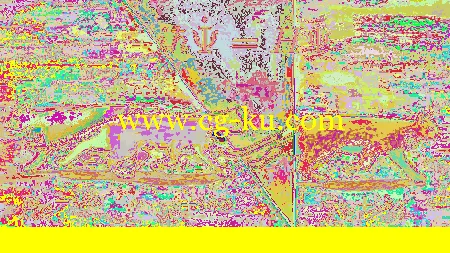
Coursera - Exploring Quantum Physics
MP4 | AVC 38kbps | English | 960x540 | 30fps | 20 hours | AAC stereo 127kbps | 1.53 GB
Genre: Video Training
An introduction to quantum physics with emphasis on topics at the frontiers of research, and developing understanding through exercise. Quantum physics is the foundation for much of modern technology, provides the framework for understanding light and matter from the subatomic to macroscopic domains, and makes possible the most precise measurements ever made. More than just a theory, it offers a way of looking at the world that grows richer with experience and practice. Our course will provide some of that practice and teach you "tricks of the trade" (not found in textbooks) that will enable you to solve quantum-mechanical problems yourself and understand the subject at a deeper level.
The basic principles of quantum physics are actually quite simple, but they lead to astonishing outcomes. Two examples that we will look at from various perspectives are the prediction of the laser by Albert Einstein in 1917 and the prediction of antimatter by Paul Dirac in 1928. Both of these predictions came from very simple arguments in quantum theory, and led to results that transformed science and society. Another familiar phenomenon, magnetism, had been known since antiquity, but only with the advent of quantum physics was it understood how magnets worked, to a degree that made possible the discovery in the 1980’s of ultrastrong rare-earth magnets. However, lasers, antimatter and magnets are areas of vibrant research, and they are all encountered in the new field of ultracold atomic physics that will provide much of the material of “Exploring Quantum Physics”.
Richard Feynman once said, “I think I can safely say that nobody understands quantum mechanics.” We say, that’s no reason not to try! What Feynman was referring to are some of the “spooky” phenomena like quantum entanglement, which are incomprehensible from the standpoint of classical physics. Even though they have been thoroughly tested by experiment, and are even being exploited for applications such as cryptography and logic processing, they still seem so counterintuitive that they give rise to extraordinary ideas such as the many-world theory. Quantum physics combines a spectacular record of discovery and predictive success, with foundational perplexities so severe that even Albert Einstein came to believe that it was wrong. This is what makes it such an exciting area of science!
Lecture 1: Introduction to quantum mechanics. Early experiments. Plane waves and wave-packets
Lecture 2: Interpretation and foundational principles of quantum mechanics
Lecture 3: Feynman formulation of quantum theory.
Lecture 4: Using Feynman path integral. Quantum-to-classical correspondence
Lecture 5: Back to the Schrödinger picture: bound states in quantum potential wells
Lecture 6: Cooper pairing in the theory of superconductivity
Lecture 7: Harmonic oscillator. Solution using creation and annihilation operators
Lecture 8: Classical and quantum crystals. Collective excitations in crystals - phonons
Lecture 9: Atomic spectra
Lecture 10: Quantum theory: old and new
Lecture 11: Solving the Schrödinger equation
Lecture 12: Angular momentum and the Runge-Lenz vector
Lecture 13: Electrical properties of matter
Lecture 14: Gauge potentials, spin and magnetism
Lecture 15: Quantum gases, quantum cryptography and quantum games
Lecture 16: Topological states of quantum matter
The class will consist of lecture videos, individually between 8 and 20 minutes in length, with approximately two hours of lectures per week. These contain 1-2 integrated quiz questions per video. There will also be standalone homework assignments that are not part of video lectures.

发布日期: 2016-06-20